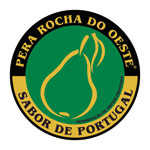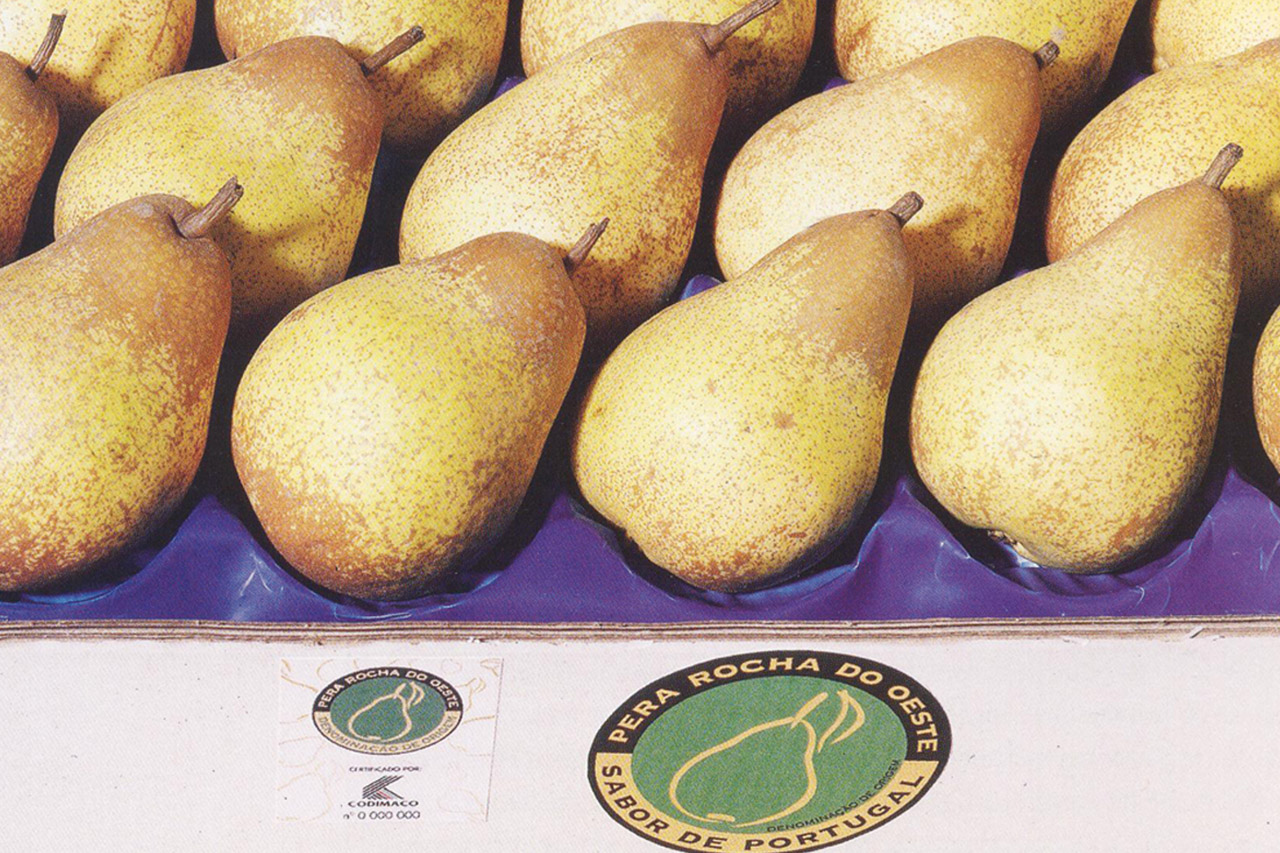Description
The Pêra Rocha do Oeste PDO is a pear of the Pyrus communis L species, also called Rocha.
Production Area
Pêra Rocha do Oeste PDO grows in areas from 30 to 80 Km North of Lisbon by the Atlantic Ocean.
Production Method
There are 3.100 hectares with trees of the Pêra Rocha do Oeste PDO in this area. The pears vary in size from 50 mm to 75 mm. They harvest from August to the end of September and therefore are available for ten months of the year, from August to May. They are harvested manually and also mechanically and gathered in custom made boxes. They are refrigerated within 24 hours of being picked.
Appearance and Flavour
Pêra Rocha do Oeste PDO is elongated and oval in shape, is pale yellow and sometimes has pink blushes. The flesh is typically white, granular, sweet, very juicy and perfumed.
History
According to legend the Rocha pear, owes its origins to a naturally occurring tree in the Farm of mister Rocha in Sintra, approximately 160 years ago. Starting with this tree the fruit became well-known throughout the region and its cultivation expanded over the years. The first official recognition of this fruit dates back to the national congress on pomology in 1932.
Gastronomy
The Pêra Rocha do Oeste PDO can be kept for approximately ten months at a temperature of between 0°C and 1°C. In a protected atmosphere and at 0°C this may be extended to seven or eight months. It is an excellent table fruit and is also used to make fruit juice, jams and desserts such as "Pêra Rocha cozida em bom vinho", pears cooked in wine, sugar and cinnamon and "Pêra Rocha assada no forno", pears baked in the oven.
Marketing
These pears are sold as Pêra Rocha do Oeste PDO in two categories: Extra and Cat I. They are sold as the customer asks them, usually in a tray of one or two layers, or in polibags for the small fruits.
Distinctive Features
Pêra Rocha do Oeste PDO today is the most important Portuguese pear. From this pear hundreds of small and medium sized businesses make a living and use local labour, therefore creating important job opportunities. At the same time almost all the regional economy benefits from this fruit and the demand for it from national and international markets.






